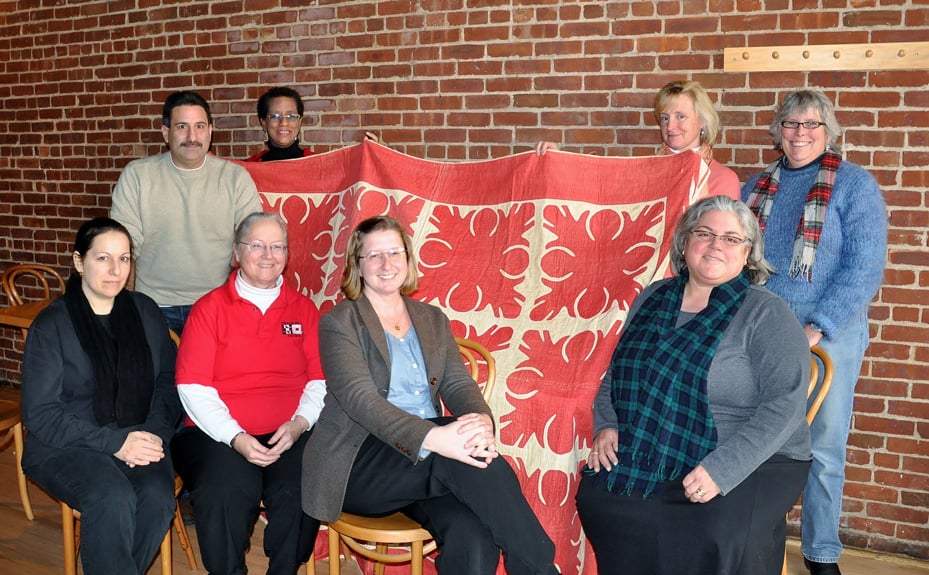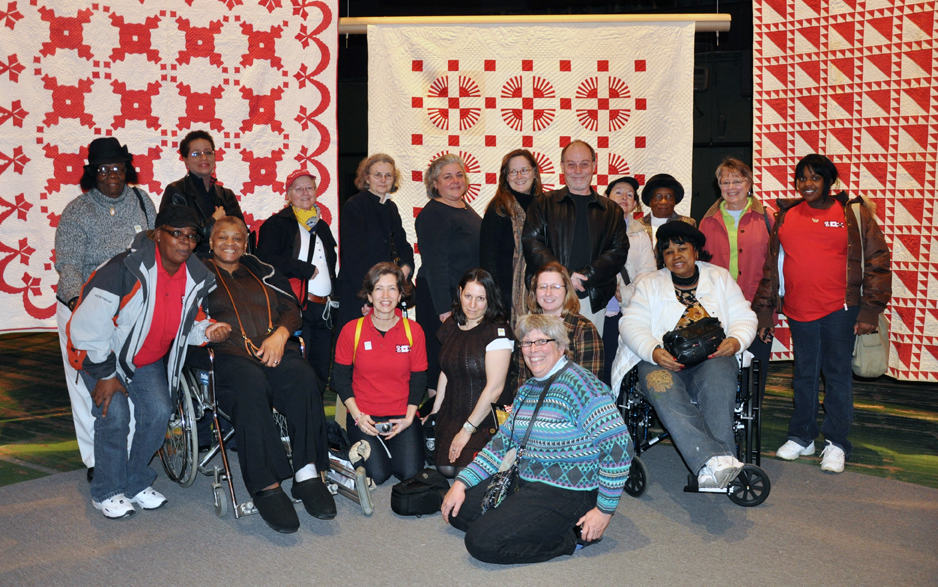a collaborative series of exhibits and events celebrating the art of the quilt

Questions & Answers
with Laura Macaluso, Norwalk Quilt Trail Coordinator
How did a disparate group of museums, small and large, come to participate in this project?
In 2009 the Norwalk Historical Society received a grant award from the CT Humanities Council for an inventory of its museum collections. During the inventory a number of quilts were found stuffed into plastic bags sitting at the bottom of a wooden chest. It was a quick leap to decide that the quilts should be displayed – they had not been seen by the public for at least twenty years, but from there the idea developed to find out what quilts were hiding away in other museums around the city. Then the conversations and meetings (and addiction) started, and we wanted to know what quilts Norwalkers all over town owned and cherished. Thus, the Norwalk Quilt Trail idea was born and the next thing you know, quilts were coming at us from every direction.
Why is this collaborative project important?
Norwalk has seven museums among its cultural offerings, each operating independently and struggling to a greater or lesser degree with the recession – although museums have operated in an austere mode for much longer than the past few years. Even though American history and culture is preserved, taught and experienced at many of our historic sites, funding for this work is scarce and highly competitive. To further exacerbate the situation, economic pressure in the corporate environment has squeezed the availability of sponsorships. What’s a small museum to do? The idea of collaboration is not new to museums – this has been encouraged for many years as a way to share expenses and resources and strengthen sustainability. It is also a way for museum board, staff and volunteers to get out of their respective “silos” and bridge gaps that are not as wide as they might seem. Enjoying each other’s company, sharing mutual interests and using each other as sounding boards are important benefits as well. Fortunately, the subject of quilts was perfect for our first collaboration for two reasons: one, because almost everyone has a quilt or a memory of a quilt or can easily recognize what a quilt is and two, because quilts contain references to so many aspects of American life (in their design, material and display) that they are applicable across the board, to almost every situation.
Would any of you do this again?
As you see from the pictures presented here, the exhibits all turned out great, and we managed to “collect” more than 100 quilts during the first half of 2011, just in time to open the exhibits. There were trials and errors that have enlightened ourselves and our work, but, I think everyone is proud and happy to have been a part of this project and yes, we are working on ideas for 2012 and beyond already!




